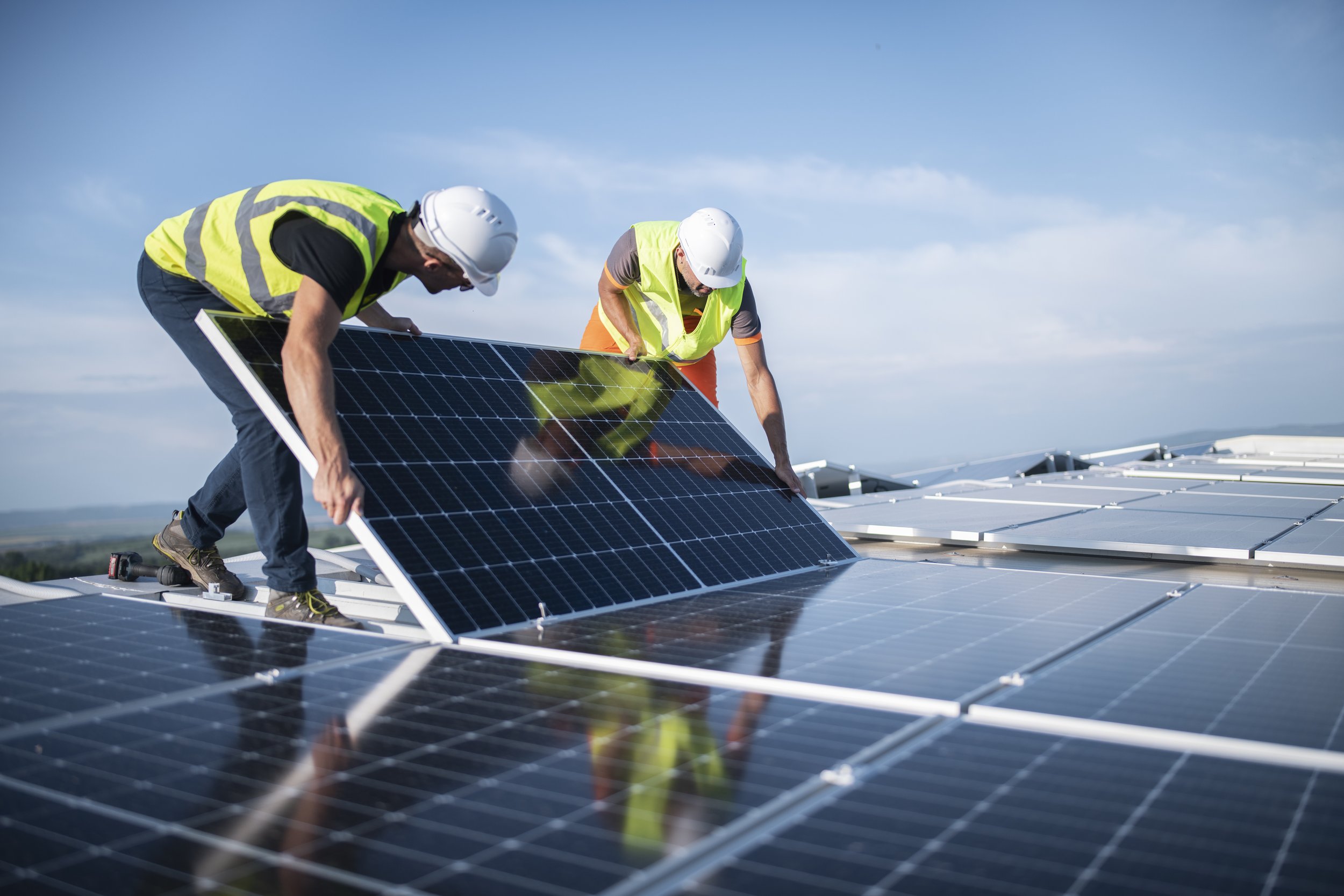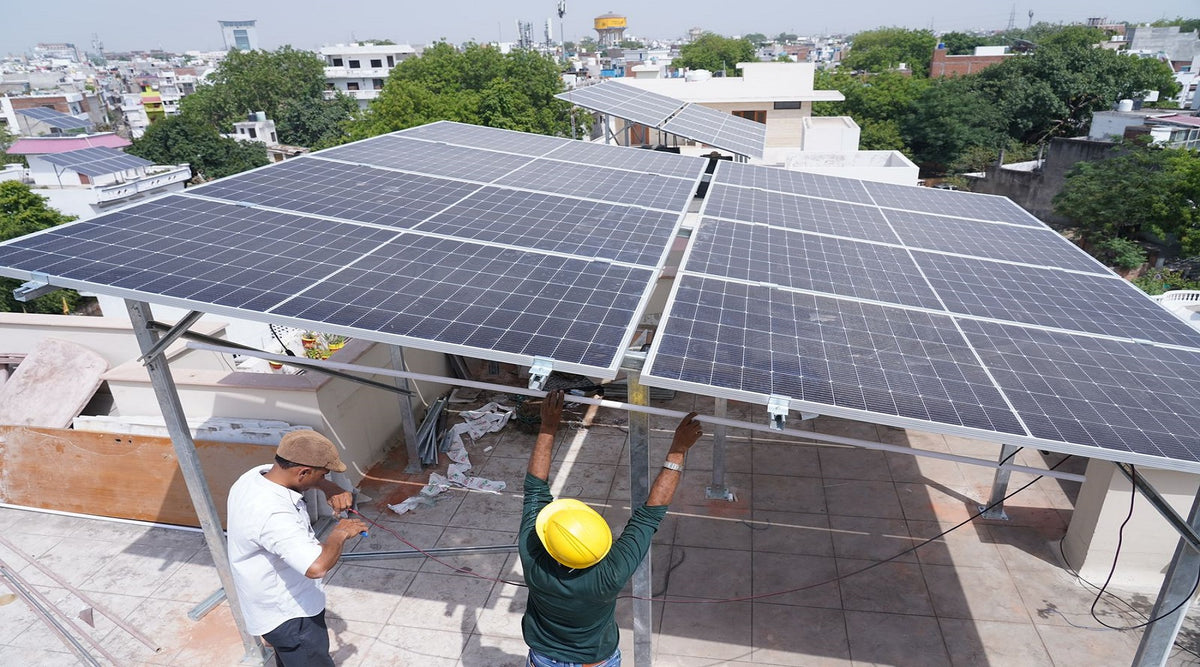Solar Panel Systems For House: Expert Setup Of Photovoltaic Systems Can Significantly Reduce Your Energy Bills
Site Evaluation and Preparation
Revealing the Land: Where Solar Dreams Begin
Before the sun's energy can be utilized, a careful website evaluation should unfold. Think of strolling onto your residential or commercial property and questioning, "Is this area really the golden ticket for solar panels?" This is where science meets instinct. Assessing the land involves more than simply looking for sunshine; it has to do with understanding how the environment will dance with your system throughout the year.
Key Elements in Site Assessment
- Sunlight Exposure: Are shadows from trees, structures, or chimneys prowling where you plan to set up? Even a little shadow can whisper away precious watts.
- Roof Orientation and Tilt: South-facing roofing systems typically take the program, but east or west can still play their part perfectly. The angle of your panels can change morning chills into afternoon heat.
- Structural Stability: Is your roofing a fortress ready to support solar panels, or does it require some strengthening? This action is important to prevent surprises after installation.
- Area Schedule: Often, the best spot isn't on the roof at all. Ground-mounted systems provide flexibility but require a various kind of foundation.
Preparing the Canvas: Website Preparedness
Once the perfect location is determined, preparation begins. Believe of it as setting the stage for a grand efficiency. The roof might require repairs, or trees may need a mild trim. Clearing particles and guaranteeing the surface is tidy are small however significant actions that lead the way for optimal panel positioning.
Actions to Prepare Your Website
- Conduct a detailed shading analysis utilizing specialized tools or apps.
- Inspect and reinforce the roofing system structure, if necessary.
- Clear barriers that may obstruct sunlight, consisting of thick branches.
- Strategy wiring paths and inverter placement to make the most of performance and security.
- Obtain any needed approvals or approvals for structural modifications.
Why Does This Matter?
Think about the story of a house owner who eagerly installed panels without extensive site assessment, only to find power generation irregular. The perpetrator? A single chimney casting a shadow in the late afternoon, decreasing output when energy need peaks. This shows a vital reality: the sun is foreseeable, but our surroundings are not. Every subtlety matters.
In the end, the preparation stage is the quiet designer of success. It turns raw capacity into concrete, tidy energy. So, when contemplating photovoltaic panel installation, ask yourself: Have I genuinely read my home's solar story? Because because story lies the secret to sustainable power.
Exploring the Varieties of Solar Panels
Ever based on a roof and wondered why some solar panels gleam like black mirrors while others sparkle with a bluish tint? The secret lies in their product composition, which dramatically influences efficiency and installation methods. 3 primary types control the market:
- Monocrystalline panels: Crafted from a single crystal structure, these are the champions of effectiveness, frequently boasting rates above 20%. Their uniform black appearance is streamlined but requires exact setup to maximize performance.
- Polycrystalline panels: Made from several silicon fragments melted together, they offer a speckled blue appearance. Somewhat less efficient than monocrystalline however usually more forgiving in installation subtleties.
- Thin-film panels: These are flexible, light-weight, and less meddlesome, thanks to their amorphous silicon or other materials. Their lower performance suggests more surface area is required-- a considerable factor to consider when preparing rooftop layouts.
Material Matters: Beyond Silicon
Silicon rules supreme, however did you know that the substrate and encapsulants can make or break the panel's durability? Glass with high transmittance, resilient polymers, and advanced anti-reflective coverings are subtle heroes. For instance, an improperly selected encapsulant can cause premature yellowing, sapping energy output over time. It's a quiet fight of products that many installers neglect up until efficiency Solar Energy System Cost dips.
Setup Insights: What the Pros Know
When installing panels, the weight distinction between types matters. Thin-film panels weigh less, alleviating tension on older roofs. Their larger size demands more meticulous circuitry and support style. Monocrystalline panels, though much heavier, can be spaced tighter, enhancing roof real estate. Here's a fast rundown of expert ideas:
- Confirm panel weight and roofing system load capacity before selection.
- Consider thermal growth rates of panel materials; mismatches can cause micro-cracks.
- Choose installing hardware suitable with the panel's frame material to prevent deterioration.
- Usage reflective backing products to enhance light capture in shaded areas.
Enjoyable Truth: The Anecdote of the "Blue vs. Black" Debate
One installer once told me about a customer who insisted on blue panels simply for looks. Months later on, the client observed a small dip in energy production compared to their neighbor's black monocrystalline setup. This story echoes an universal truth: often, what looks good does not constantly perform best. Yet, with the right angle and setup, even polycrystalline can shine.
Installation Process and Strategies
Imagine hoisting a panel onto your roof for the very very first time. The dance in between accuracy and patience begins here. The solar panel setup process isn't practically bolts and brackets; it's a cautious orchestration of angles, weights, and weather considerations. Have you ever contemplated how a slight misalignment can shave off valuable energy production? That portion of a degree can be the distinction between a thriving system and one that underperforms.
Step-by-Step Installation Insights
- Site Assessment: Before any equipment touches your roof, the assessment stage involves assessing roofing system orientation, shading aspects, and structural integrity. This step surpasses the surface area-- actually. Knowing the roofing's load capability is crucial to prevent surprises later on.
- Installing Setup: The option in between flush mounts and adjustable racks depends on your roof type and sun direct exposure. Adjustable racks offer an ace in the hole-- tweak angles seasonally to catch maximum sunlight.
- Panel Positioning: Panels should be spaced and secured to avoid thermal expansion concerns and water pooling. Ignoring this can cause distorted panels or leakages, a subtle however pricey oversight.
- Electrical Connections: Circuitry is where numerous setups falter. Utilizing correct gauge wires, safe and secure ports, and water resistant junction boxes makes sure longevity and security. Ever seen a panel system underperform because of loose or rusty connections? It's more typical than you might believe.
- System Screening: Carrying out an extensive performance check post-installation can catch issues before they escalate. Voltage tests, inverter performance, and tracking software calibration are non-negotiable steps.
Pro Tips for Ideal Installation
- Think about microinverters or power optimizers to reduce shading impacts and make the most of output from each panel.
- Incorporate a grounding system meticulously to avoid electrical noise and secure versus lightning strikes.
- Usage corrosion-resistant installing hardware, especially in seaside or damp environments, to extend system lifespan.
- Apply weatherproof sealants at every roofing system penetration to avoid future leakages-- a tiny lapse can cause years of water damage.

The Often-Overlooked Aspects
Numerous installers ignore the subtle effect of roofing system pitch and seasonal sun angle variations. A flat roof installation might benefit from tilted racks angled differently for winter and summer. This flexibility can boost annual energy yield by up to 15%. The synergy in between panel spacing and air flow is vital. Panels that are too close together can trap heat, lowering effectiveness-- a subtlety that only seasoned installers appreciate.
| Installation Element | Specialist Insight | Typical Oversight |
|---|---|---|
| Installing Type | Adjustable racks make it possible for seasonal angle modifications. | Utilizing set installs on flat roofs. |
| Electrical Electrical wiring | Appropriate gauge and waterproof connectors make sure durability. | Ignoring waterproofing results in rust. |
| Panel Spacing | Sufficient gap enables heat dissipation. | Panels too close cause getting too hot. |
Security Procedures and Finest Practices for Photovoltaic Panel Installation

Ever attempted balancing on a roofing system while juggling sharp-edged photovoltaic panels? It's not precisely a Sunday stroll. The most ignored element during solar panel installation is the careful attention to safety protocols that keep installers alive and well. The dance between weather, electricity, and heights demands a near-militant discipline.
Important Safety Equipment: Your First Line of Defense
- Non-slip footwear: Slipping on a slick roofing system can turn a regular task into a tragedy.
- Harnesses and lanyards: Appropriate fall arrest systems are non-negotiable.
- Insulated gloves: Protect versus electric shocks, especially when managing live wires.
- Protective eyewear: Guard eyes from UV rays, dust, and flying particles.
- Tough hats: Roofing work means unexpected bumps-- don't underestimate falling items.
One seasoned installer when shared how a basic gust of wind nearly sent out a panel-- and himself-- plunging. That close call enhanced why double-checking harness connections isn't simply treatment; it's survival.
Pre-Installation Planning: A Blueprint for Safety
Before stepping on the roofing system, an extensive website assessment is crucial. Are the shingles fragile? Is the roofing pitch dangerously high? These elements determine the type of security equipment needed and the setup approach. Ignoring them invites catastrophe.
Consider the electrical design too. Solar arrays connect to inverters, breakers, and house wiring-- all potential shock risks if mishandled. Labeling circuits plainly and de-energizing systems when possible lowers danger significantly.
Finest Practices to Avoid Common Hazards
- Weather check: Prevent installation during rain, snow, or high winds. Moisture integrated with electricity is a dish for disaster.
- Tool management: Secure tools with lanyards or tool belts. Dropped tools can injure individuals listed below or damage panels.
- Two-person rule: Never work alone on rooftops. An additional pair of eyes and hands can be a lifesaver.
- Clear communication: Develop hand signals or walkie-talkie systems when verbal cues get lost in wind or distance.
- Panel handling technique: Constantly lift panels with knees, not back, to avoid pressure and preserve control.
Electrical Safety: Beyond the Fundamentals
Many undervalue the intricacy of DC voltage created by panels. Unlike air conditioning, DC arcs are harder to extinguish, making arc fault defense gadgets indispensable. Understanding the electrical wiring schematic thoroughly before touching anything can prevent electrocution.
| Safety Component | Pro Idea | Why It Matters |
|---|---|---|
| Utilize Evaluation | Look for wear before each usage | Worn harnesses can stop working throughout a fall |
| Panel Orientation | Plan layout to reduce uncomfortable lifts | Avoids muscle injuries and panel damage |
| Electrical Isolation | Use lockout/tagout treatments | Ensures power is off throughout circuitry |
Does the thought of dealing with high-voltage DC make you pause? It should. Appreciating the unnoticeable forces in play and getting ready for them with the right security mindset transforms a risky job into a manageable one.